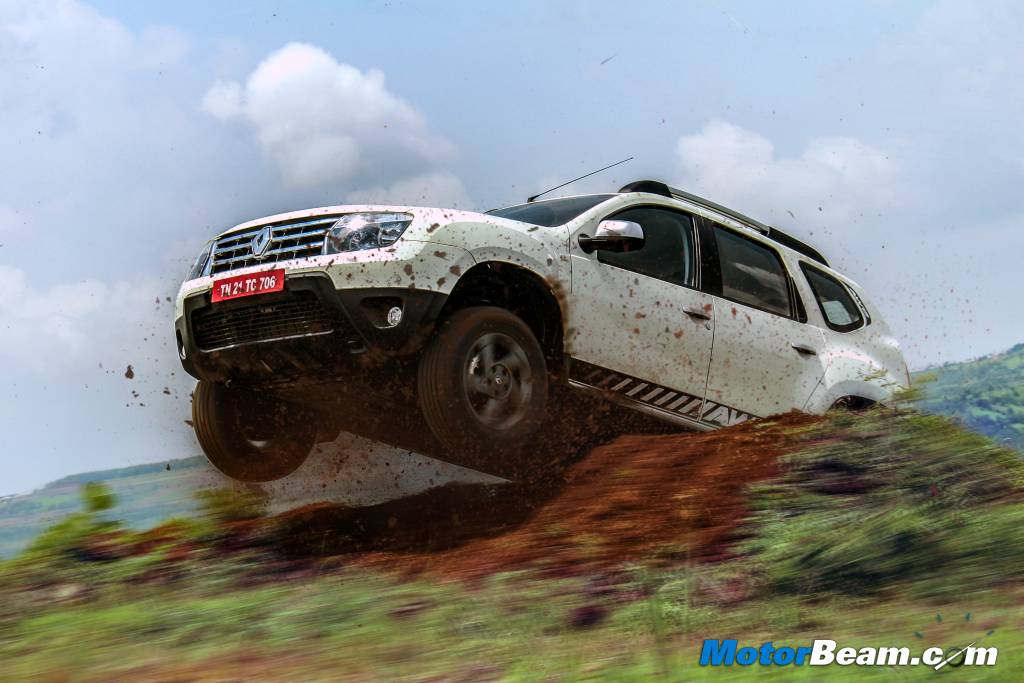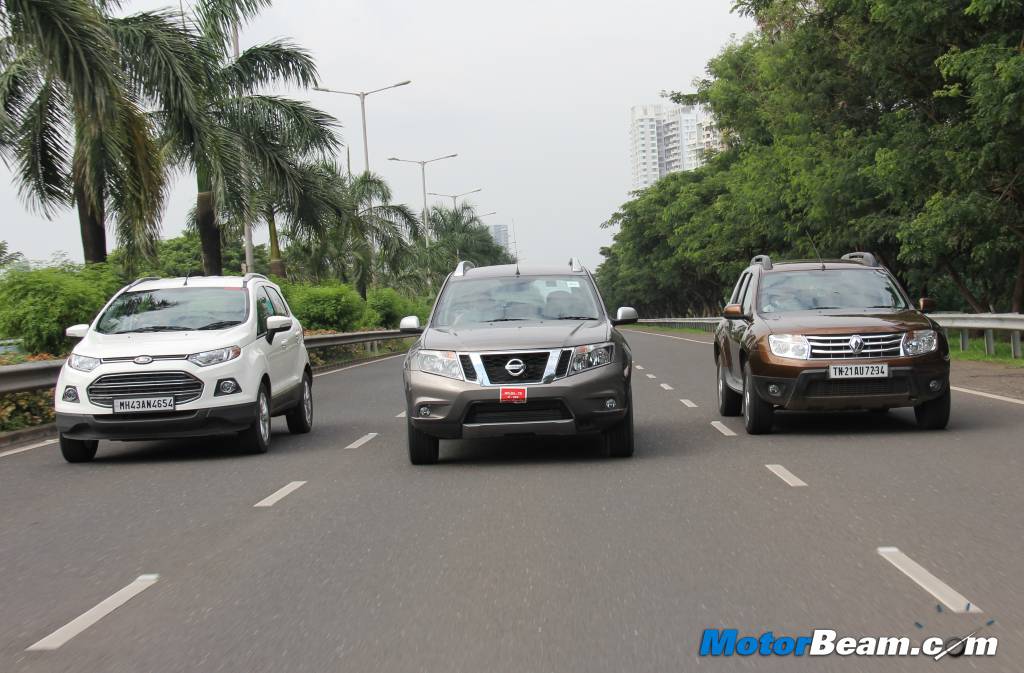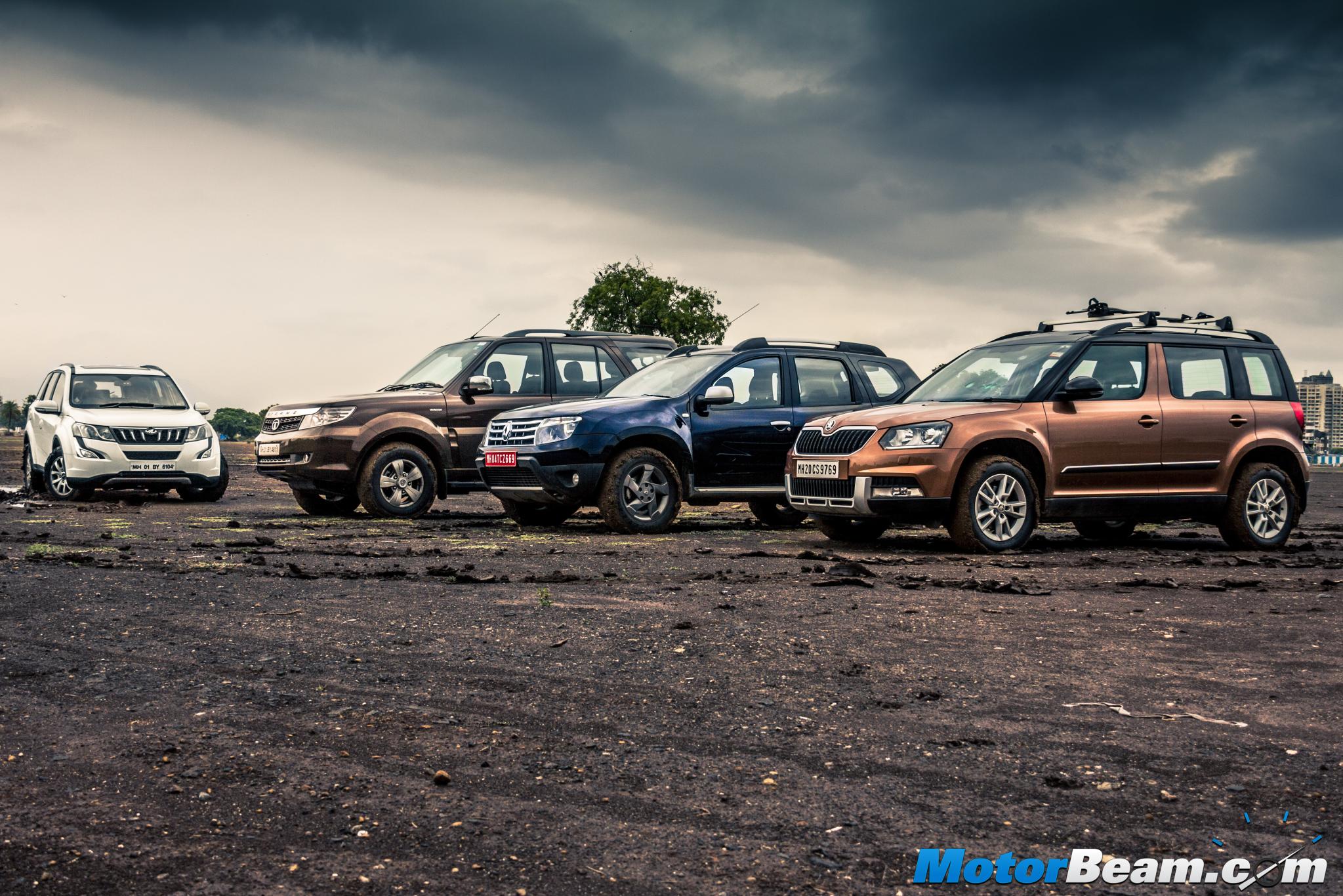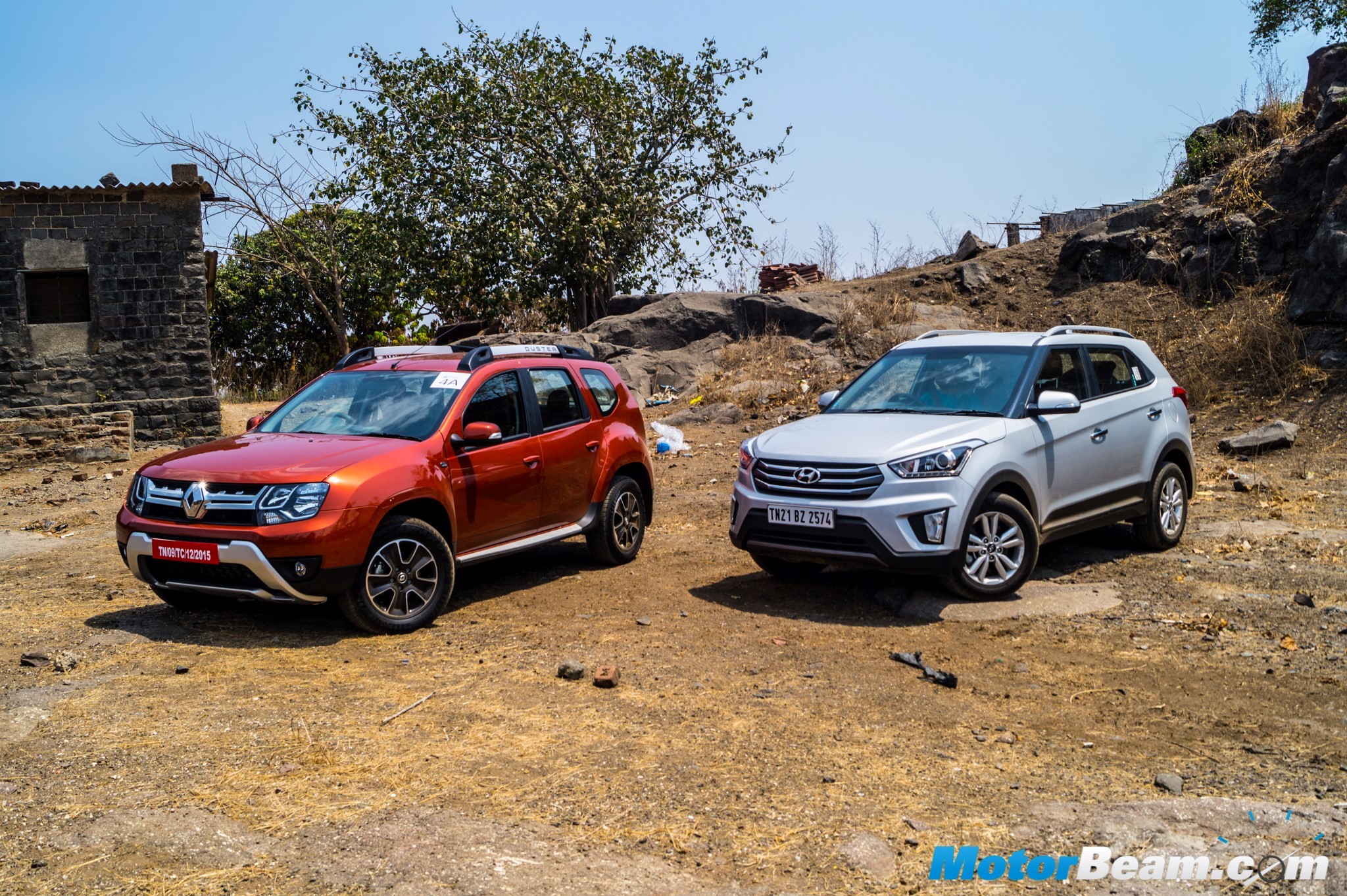Used Renault Duster – How To Buy
We tell you about the things to check while looking out for a pre-owned Renault Duster.
We tell you about the things to check while looking out for a pre-owned Renault Duster.
Home » Car News » Renault Duster » Used Renault Duster – How To Buy

The Renault Duster was first launched in India in 2012. It kicked off the compact SUV segment and was priced from Rs. 7.19-11.29 lakhs. Renault offered the vehicle with a 1.6-litre petrol engine making 104 PS and 145 Nm while there was also a 1.5-litre dCi diesel engine available in two states of tune – 85 PS & 200 Nm and 110 PS & 248 Nm. The former got a 5-speed MT while the latter got a 6-speed MT.
Renault is still selling the same generation of the Duster in India but the vehicle has got quite a few changes over the years. Renault introduced an AWD variant with the 110 PS diesel trim first, then they got an AMT variant again with the diesel engine and then the petrol engine was replaced with a 1.5-litre unit with a CVT. The AMT and AWD were never offered together in a single variant. Currently, the Duster is only offered with a 1.5-litre BS6 petrol engine but a 1.3-litre turbo petrol engine will make its way very soon.
The Renault Duster has seen immense popularity in India and the diesel variants fetched most of the sales. The older variants didn’t have too many features but subsequent updates ensured that the Duster got most of the necessary equipment on offer. The Duster is quite an abuse-friendly car but before your plonk your money on one, there are a few things to keep in mind.
The Renault Duster was launched in India at a time when the compact SUV segment didn’t even exist. The relatively compact dimensions, sturdy suspension setup, durable nature and the workhorse diesel engine made the Duster an instant success and a worthy contender for those people who didn’t want an SUV as big as the Tata Safari or Mahindra Scorpio.
The design of the Renault Duster is very simple. You don’t get any creases, cuts or character lines but the car does look pleasant. The interior layout is straight-forward and functional and if you look at it today, well, it does feel outdated. The seats are decent for general use, there’s enough space at the rear and the boot is humongous.
The earlier models of the Duster used to get dual front airbags and ABS only on the top RxZ trim while the lower variants had to make do without these safety features. Even electrically adjustable ORVMs, keyless entry, reverse parking sensors and the likes were offered on the top variants only.
The petrol engine offered decent driveability but its fuel efficiency was far from impressive. The diesel engine really shone because of its reliable nature and the brilliant fuel economy. The 85 PS tune offered adequate performance and turbo lag was felt lower on this while the 110 PS tune offered much better punch but had more turbo lag too. When Renault introduced the AWD version, they worked on the engine and clutch too and the driveability became better.
The suspension has always been one of the highlights of this vehicle. It can take a lot of abuse, it loves gliding over potholes and the ride quality is just too good, even today. The steering is also quite feedback-rich and responsive. It is a bit heavier than other compact SUVs, weighs up nicely on the highways and gets a bit violent if you take turns at high speeds though. The AWD version made the Duster even more competent but sadly there are very few AWD units in the used car market.
The Renault Duster has barely any electronics and complex features. It is built to withstand abuse but there have been certain common issues with the Duster. We’ll first talk about the injectors which are bound to get clogged if the car is regularly filled with poor quality or unadulterated fuel. The high-pressure pump is also likely to give up due to poor fuel and this can be an expensive fix. A car that takes longer than usual to start or is losing power is an indication of this issue.
The older models used to have a very heavy clutch, especially on the 110 PS variant so if you’re test driving a pre-2014 car, don’t be surprised if the clutch is really heavy. The clutch is likely to be worn out on cars that have done upwards of 60,000 kms but premature wear can also take place if the driver unnecessarily rides the clutch pedal in day-to-day driving and this is very likely to happen because of the heavy pedal.
Renault had made the clutch lighter when they brought out the 2014 model which had some updates. If you’re checking out an AWD car, do inspect it thoroughly and check whether the AWD system works properly or not. If driving an AMT, expect slow gearshifts but take a keen look at the service history and see if any work has been done on the transmission.
Also, have a good look at the air conditioning. It does perform quite optimally in our climate but certain components can be expensive to fix. The AC drain pipe has a tendency to leak some water in the driver and passenger footwells and we had experienced this on a Nissan Terrano test car (which is technically a Duster).
Other than these points, you need to do a general inspection of the vehicle properly. Body panels, tyres, alloys, lights, electricals, etc. are the things that you should check. There are a lot of owners who service their vehicles in aftermarket garages and that’s fine provided the vehicle is backed with proper service bills but if it is missing major chunks of service history, skip the car. People do tend to drive these cars a lot and quite a few Dusters have very high ODO readings which could then be tampered.
The Renault Duster has a service interval of 10,000 kms/12 months and a typical service will cost Rs. 10,000-12,000/-. For older cars (2012-2014) an insurance policy will cost Rs. 4000-6000/- while for 2015-2017 models it should ideally be Rs. 7000-10,000/- depending on the type of cover you choose and your IDV. Getting a zero-dep policy for older cars will be next to impossible but you can try getting one for 2015+ models.
The AC compressor of the Duster is priced upwards of Rs. 70,000/- but there are aftermarket options available for Rs. 25,000-30,000/-. Meanwhile, the condenser costs around Rs. 20,000/- while an aftermarket option will be a slightly cheaper at Rs. 15,000/-. The front bumper costs Rs. 9500/- while the rear bumper is priced at Rs. 3200/-. A single ORVM will cost you Rs. 2000-2200/-.
The front and rear windshields are priced at Rs. 5500/- and Rs. 4000/- respectively. An ABS sensor costs Rs. 2500-2800/- while a front disc brake is priced at Rs. 3200/- while front brake pads usually cost Rs. 3000/-. If the injectors on your car fail, you can expect a bill of close to Rs. 35,000/-. A high-pressure pump costs around Rs. 50,000/-. These parts fail on few cars, mostly those that are regularly given doses of low quality fuel.
The good thing about the Renault Duster is the fact that it is a very robust car and if you just follow all the service schedules, it won’t really give you a reason to complain. We have seen lots of owners who have driven their cars for more than 1 lakh kms without major mechanical failures.
There are plenty of used Renault Dusters available in the pre-owned market so this should give you a good leverage to negotiate with sellers. We recommend buying the diesel variants because the oil-burner has its own advantages over the petrol engine. If your budget isn’t tight, avoid going for old cars and lower trims. Instead, try to find 2016+ models. The Duster got a cosmetic update in 2016 with changes to the exterior, cabin and the addition of an AMT and this version of the Duster was quite good. Make sure you buy a variant that has dual front airbags and ABS.
Buy the AWD variant if you like off-roading but if you’re going to use the car for just commutes then it makes sense getting the AMT. Renault also offered the petrol engine with a CVT but sales weren’t that great. The diesel manual is also a good option if you don’t drive in heavy traffic everyday. For 2012-2013 models, you can pay Rs. 3.30-3.75 lakhs for a fairly maintained car. If a car is in exceptionally good condition, don’t hesitate to pay a slight premium. For 2014 models, you can pay Rs. 4.25-4.75 lakhs. There are some dealers who quote obnoxious prices so you need to study the market properly before negotiating.
A price of Rs. 5-5.70 lakhs is a fair amount for 2015 models, though an AWD car is likely to cost more. 2016 facelifted models should have a realistic price of Rs. 6-6.70 lakhs while 2017 and 2018 models obviously cost more and the pricing depends on how much the car has run and how much warranty is left. The Duster got another facelift in 2019 but these cars aren’t available via the pre-owned route yet.
The first alternative that comes to my mind is the Nissan Terrano which is just a rebadged Duster. It has the same mechanicals but the Terrano didn’t get an AWD version. Also, Renault’s service is known to be slightly better than Nissan’s but then it depends from city to city so you may want to ask some owners in the place where you stay.
Another worthy option is the Hyundai Creta. The Creta also got multiple engine options (1 petrol and 2 diesel) and it also got a superior torque convertor automatic. The Creta has way more features, looks posh and Hyundai has more service centres than Renault too. But, the Creta has always been a FWD vehicle. The Creta came out in 2015 and since it is a newer car, it is priced higher than the Duster.
You can get full-size SUVs like the Tata Safari Storme and Mahindra Scorpio in this budget but expect these vehicles to be heavily abused. Finding a well-maintained one will be a tough task for sure. An out-of-the-box alternative would be a 2010 Toyota Fortuner. Yes, you will get a 10 year old SUV for Rs. 8-9 lakhs but then it is far more capable (4×4) and is known to be extremely reliable. Other than that, there’s the usual fare of sub-4-metre compact SUVs that you can look at. The Maruti S-Cross is also a great alternative.



